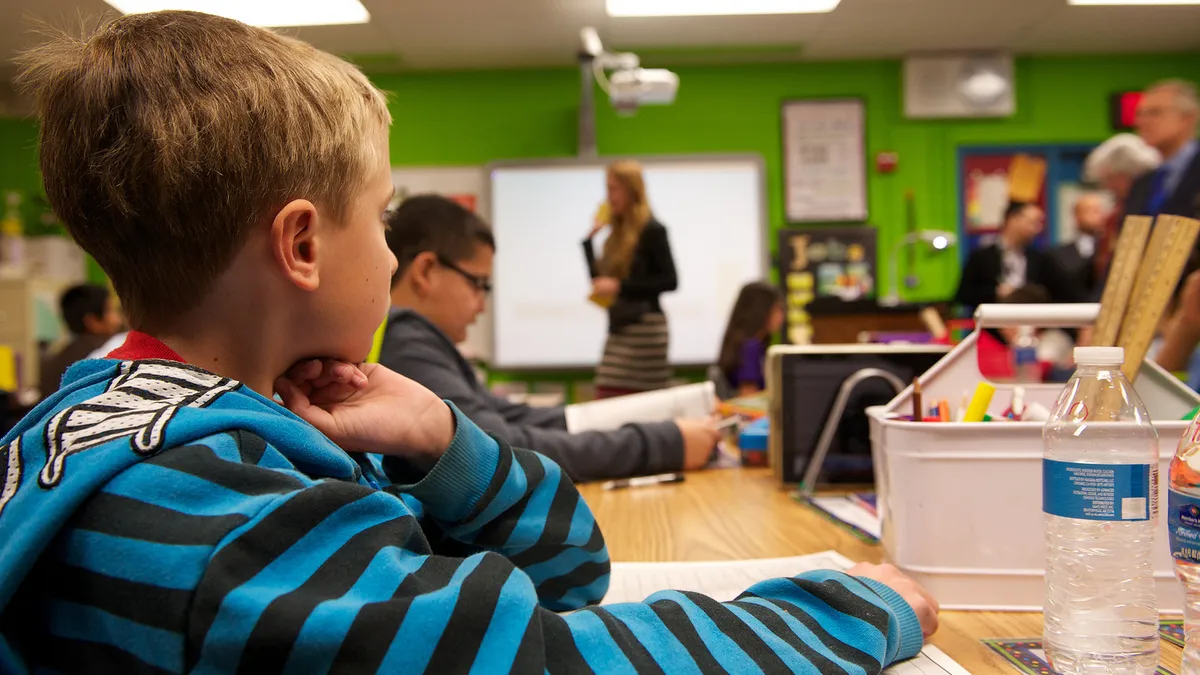Dive Brief:
-
Educators can begin strengthening students’ sense of school community through simple activities directly with learners and throughout the school building, elementary school teacher Paula Diaz writes for Edutopia.
-
One activity Diaz uses is called “Birthday Crews,” in which a group of students — one from each class — decorates the door of the classroom where a student has a birthday. (There’s confetti involved too.) Cultural holidays including Thanksgiving and New Year’s are also recognized: Most of Diaz’s students celebrate Three Kings Day, for example, so the class shares a sweet bread called a Rosca de Reyes.
-
Other activities can include students taking turns sitting in a hot seat while the rest write nice things about them. Another task requests that the class privately share details under the prompt, “I wish my teacher knew.” With these activities, Diaz feels students are given the opportunity to connect more strongly with her as a teacher and with each other.
Dive Insight:
The early grades are an important period for seeding socialization and social development, where educators can integrate lessons and activities that can support both academic and social growth.
Maurice Elias, professor of psychology at Rutgers University and director of the Rutgers Social-Emotional and Character Development Lab, suggests a number of different activities can link up instructional strategies with social cues, from sharing circles to morning meetings.
These moments encourage students to share their feelings, listen to one another and express kindness. Such social-emotional learning skills are essential to all instruction, including academics, he said. Embedding them in the classroom can help students develop them further.
“Building a positive living and learning community in the classroom is a 180-day activity every school year,” he said. “The payoff is more socially competent children, who spend more time on-task with learning and who perform academically closer to their potential.”
The key to this kind of curriculum is that it’s not task-oriented or adopted as isolated activities. Students aren’t being asked to memorize details but instead develop skills just by doing the activity itself. Weaving in these activities as a regular part of the day, through cues, reminders and prompts, helps to more deeply embed these skills consistently.
For younger grades, Elias suggests reading to students. He said this can help students develop a vocabulary for feelings and recognize them in themselves and each other.
“I recommend that with young children, certainly K-1, teachers start any picture book by reading the pictures before the text and helping children understand how illustrations convey different feelings, and to learn labels for those feelings that will take them beyond ‘the big three’ — sad, mad and glad,” he said. “If children can't detect feelings accurately in books, they will have a very hard time decoding people's feelings at the speed of life."












